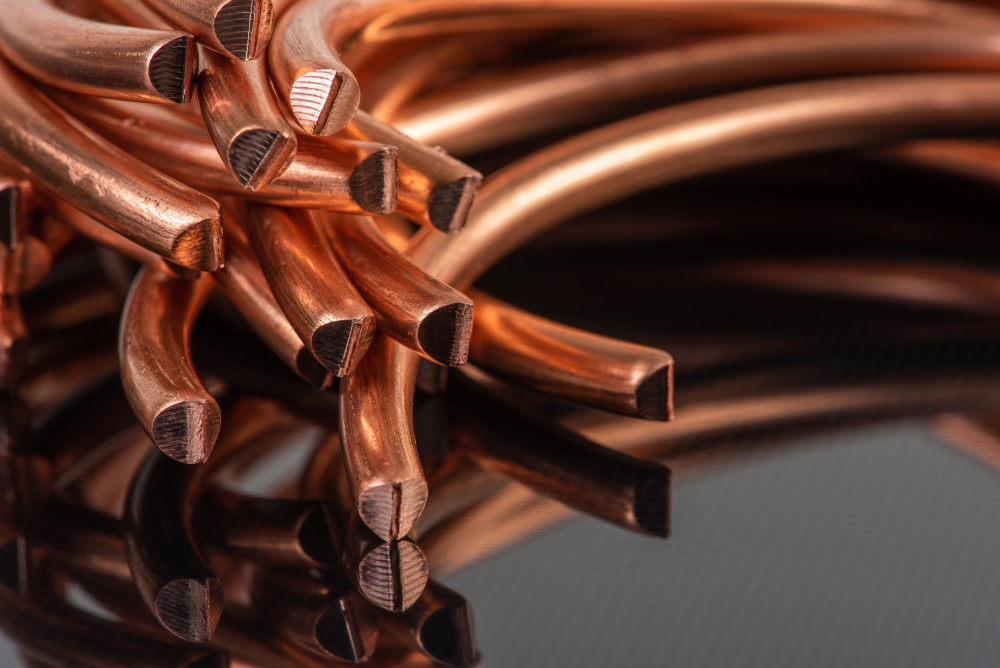We’ve all heard the story. “The green energy movement will keep copper up!.” But, realistically, how bullish is the long-term outlook for copper? Here at MetalMiner, we’ve pondered this question quite a bit. Ultimately, we’ve come to the conclusion that the copper futures indeed possess a lot of long-term potential. However, is it possible that potential is more bearish than bullish?
Copper Futures: Past Analysis and Future Speculation

Copper prices (LME primary) still remain relatively high compared to just under a decade ago. In MetalMiner’s Monthly Outlook report, we detail the recent rally and discuss whether or not prices will continue to climb. However, since June 22, copper prices have seen a noticeable cooldown.
The recent copper rally saw added strength thanks to China’s latest round of government stimulus. MetalMiner’s own Monthly Metals Index trend (a combination of U.S., LME, Korean, Japanese, Indian, and Chinese copper) moved sideways over four months, with minimal up-and-down action. Meanwhile, individual sources, such as the Comex copper spot price and the LME primary three-month, also maintained a consistent overall sideways trend over the past six months.
Many factors influenced copper prices this past year. Examples include geopolitical unrest in Peru and Chile, the growing green energy market, and speculations that copper supplies might experience a pinch in the long run. All of these things have helped to hold copper sideways with minimal breaks through support or resistance zones. The question is, when will copper see a huge swing? And when it happens, will it be up or down?
Does your company have a copper buying strategy based on current copper price trends?
Why Copper Futures Could Rise
Copper historically mirrors the world’s economy. This is because it sees extensive use across various sectors, including power generation and transmission, construction, manufacturing equipment, and electronics. Renewable energy infrastructure, such as wind turbines, solar panels, and electric cars, also relies heavily on copper components. In fact, electric vehicles require approximately four times as much copper as internal combustion engine automobiles.

Many analysts expect the shift from fossil fuels to alternative energy sources to further elevate copper’s importance. Moreover, ongoing concerns about the potential future scarcity of copper resources continue to support bullish sentiments for copper futures. Indeed, the average age of the world’s top ten mines is 95 years. Every year, miners need to dig deeper for increasingly lower-grade ore, which makes the entire operations more expensive. Additionally, copper output has decelerated in recent years, leading to a supply shortfall amidst rising demand. Of course, these factors could potentially provide further support to copper futures.
Overall, copper’s historical connection to the world economy, its significant role in renewable energy infrastructure, and concerns about future scarcity and supply-demand dynamics should continue to contribute to the anticipation of increased demand. If so, expecting higher copper prices in the long term makes sense.
Not sure why you should trust MetalMiner’s opinion about the direction of copper futures ? Take a look at our track record.
Why Copper Prices Could Fall
There is also a significant risk of copper falling in the long run. One explanation for the expected reduction in copper prices is that some believe the supply will increase instead of decrease. In China, copper futures markets have a substantial bidirectional information flow. Since China is one of the top copper producers, any significant disruptions or constraints in the supply chain could cause substantial fluctuations.

It’s also worth noting that some people believe that copper demand will decrease rather than increase. While the world continues to slowly recover from the COVID-19 pandemic, it may take considerably longer for demand to return to pre-pandemic levels.
Furthermore, the availability of alternative materials to copper may result in a drop in global copper prices. As technology advances, materials that can replace copper in various applications become more widely available. For example, some electric automobiles already use aluminum wire instead of copper. This trend toward alternate materials may lead to decreased copper demand, resulting in reduced pricing.
Sideways copper markets can change rapidly. MetalMiner Insights helps buying organizations manage market volatility by providing metal price forecasting and advice about when and when not to purchase metal. Schedule a consult.




